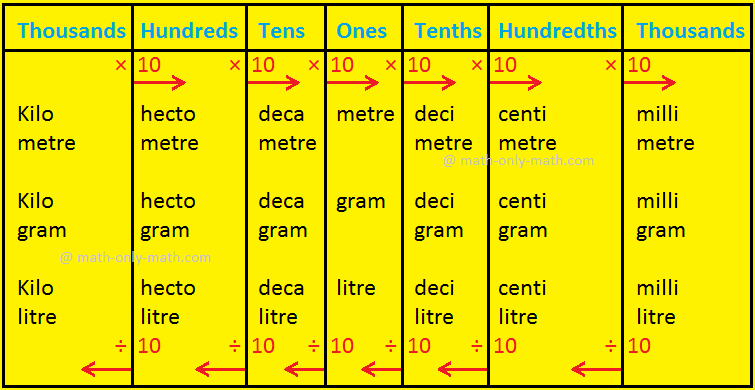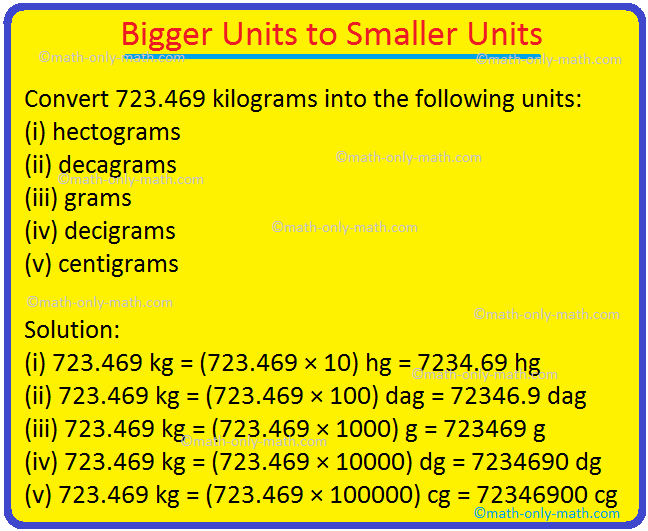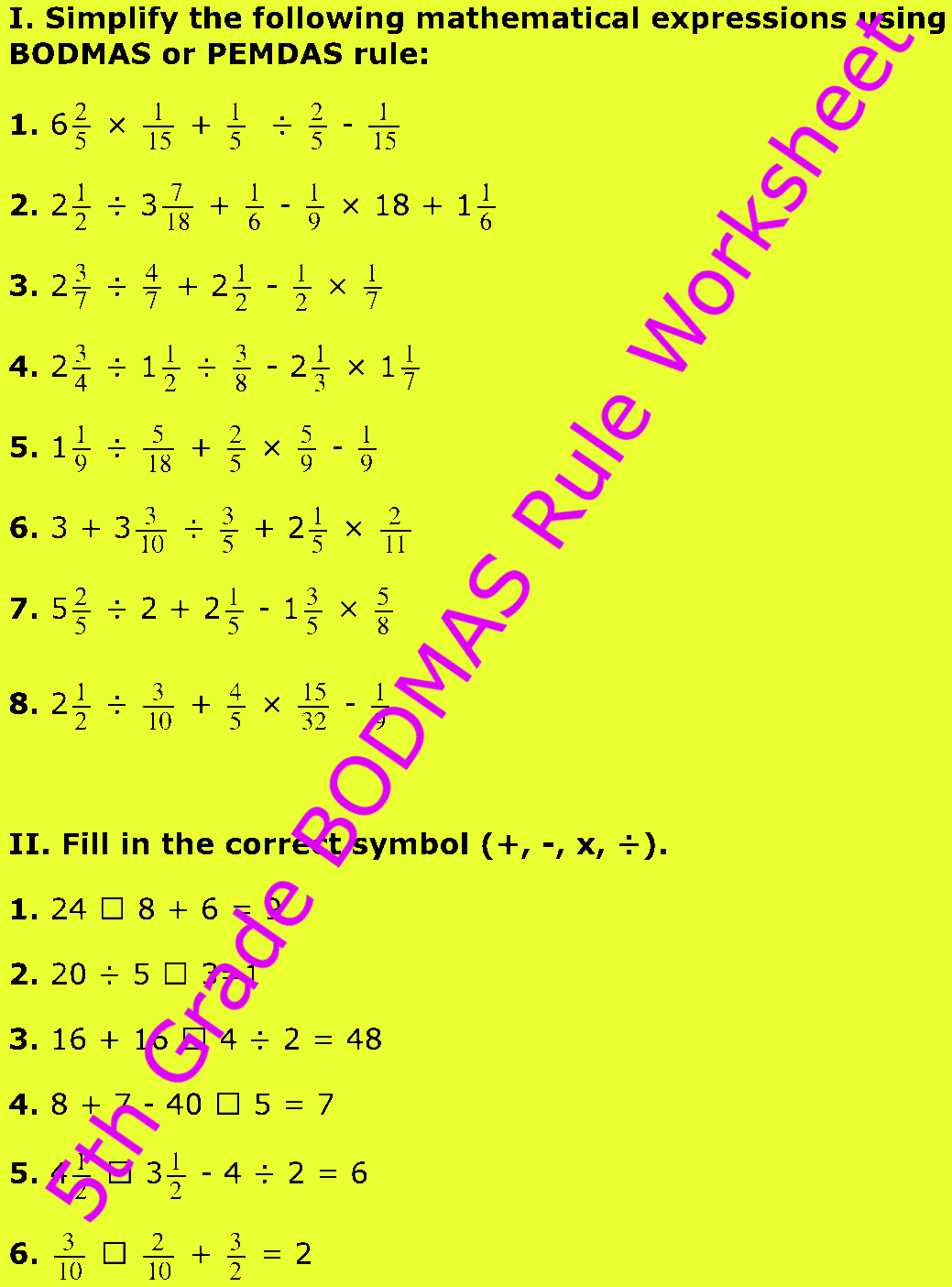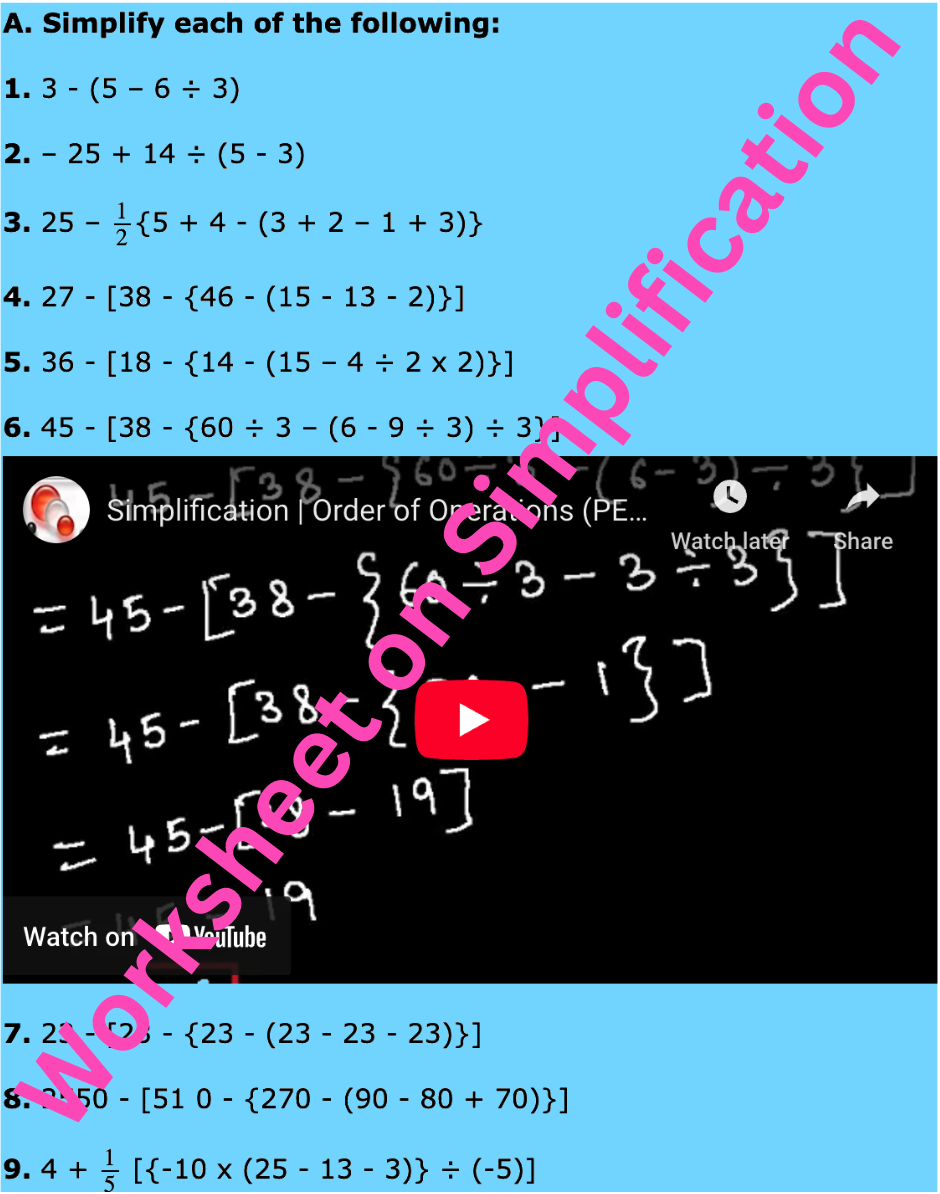Bigger Units to Smaller Units
To convert a bigger unit a smaller unit, we move the decimal point of the right. In other words, we can say that we multiply. This is very important for us to learn how to convert bigger units into smaller units. We use it often in our daily life.
Measurement of length, mass and capacity tables can be represented in the form of a place-value chart as shown below.
I: Converting Larger Units of Length into Smaller Units of Length:
Conversion of higher units into lower units::
1. Convert 22 cm into mm.
Solution:
We know that 1 cm = 10 mm
22 cm = 22 × 10 mm
= 220 mm
2. Convert 17 cm 8 mm into mm.
Solution:
17 cm 8 mm = 17 cm + 8 mm
We know that 1 cm = 10 mm
17 cm + 8 mm = 17 × 10 mm + 8 mm
= 170 mm + 8 mm
= 178 mm
3. Convert 5 km into meters. Solution:
We know that 1 km = 1000 m
5 km = 5 × 1000 m
= 5000 m
4. Convert 9 km 248 m into meters.
Solution:
9 km 248 m = 9 km + 248 m
We know that 1 km = 1000 m
9 km + 248 m = 9 × 1000 m + 248 m
= 9000 m + 248 m
= 9248 m
5. Convert 4 meters into decimeters.
Solution:
We know that 1 m = 10 dm
4 m = 4 × 10 dm
= 40 dm
Conversion of higher units into lower units:
(Make use of the above table)
6. Convert 53 km to (i) hectometre (ii) decametre (iii) metre
(i) 1 kilometre = 10 hectometres
53 km = 53 × 10 hectometres
= 530 hectometres
(ii) 1 kilometre = 10 × 10 decametres
53 km = 53 × 100 decametres
= 5300 decametres
(iii) 1 kilometre = 10 × 10 × 10 metres
53 km = 53 × 1000 metres
= 53000 metres
II: Converting Bigger Units of Mass into Smaller Units of mass:
To convert kilogram into grams and grams into milligrams, we multiply by 1000.
For example:
1. Convert 5 g into mg.
We know that 1 g = 1000 mg
5 g = 5 × 1000 mg
= 5000 mg
2. Express 5 kg 350 g as g.
We know that 1 kg = 1000 g
So, 5 kg = 5 × 1000 g
= 5000 g
5 kg 350 g = 5000 g + 350 g
= 5300 g
3. Convert 61 hectograms to centigrams
1 hg = 10 × 10 × 10 × 10 cg
= 10000 cg
Therefore, 61 hg = 61 × 10000 cg
= 610000 cg
4. Convert 6 quintals to kilograms.
1 quintal = 100 kg
6 quintals = 6 × 100 kg
= 600 kg
5. Convert 7 tonnes to (i) quintals (ii) kilograms
(i) 1 tonne = 10 quintals
7 tonnes = 7 × 10
= 70 quintals
(ii) 1 tonne = 1000 kg
7 tonnes = 7 × 1000
= 7000 kg
IV: Converting Bigger Units of Capacity into Smaller Units of Capacity:
To convert liters into milliliters, we multiply the number of liters by 1000.
For example:
1. Express 54 l into ml.
We know that 1 l = 1000 ml
Hence, 54 l = 54 × 1000 ml
= 54000 ml
2. Express 29 l 360 ml into ml.
We know that 1 l = 1000 ml
Hence, 29 l 360 ml = 29 × 1000 ml + 360 ml
= 29000 ml + 360 ml
= 29360 ml
3. Convert 1.54 decalitres to centilitres
1 dal = 10 × 10 × 10 cl
= 1000 cl
Therefore, 1.54 dal = 1.54 × 1000 cl
= 1540 cl
Note: When a higher unit is changed into a lower unit, we multiply the number of the higher unit by the number showing the relationship between the two units.
Solved examples for the conversion of bigger units to smaller units:
1. Convert 723.469 kilograms into the following units:
(i) hectograms
(ii) decagrams
(iii) grams
(iv) decigrams
(v) centigrams
(vi) milligrams
Solution:
(i) 723.469 kg = (723.469 × 10) hg = 7234.69 hg
(ii) 723.469 kg = (723.469 × 100) dag = 72346.9 dag
(iii) 723.469 kg = (723.469 × 1000) g = 723469 g
(iv) 723.469 kg = (723.469 × 10000) dg = 7234690 dg
(v) 723.469 kg = (723.469 × 100000) cg = 72346900 cg
(vi) 723.469 kg = (723.469 × 1000000) mg = 723469000 mg
Let us consider another example involving different types of conversions.
2. Convert the following:
(i) 8 m 6 dm 3 cm 2 mm to mm
(ii) 2 kg 4 hg 6 dag 8 g to g
(iii) 7 l 1 dl 4 cl 9 ml to ml
Solution:
(i) 8 m 6 dm 3 cm 2 mm to mm
= (8 × 1000 + 6 × 100 + 3 × 10 + 2) mm, [Because 1 m = 1000 mm, 1 dm = 100 mm and 1 cm = 10 mm]
= (8000 + 600 + 30 + 2) mm
= 8632 mm
(ii) 2 kg 4 hg 6 dag 8 g to g
= (2 × 1000 + 4 × 100 + 6 × 10 + 8) g, [Because 1 kg = 1000 g, 1 dg = 100 g and 1 dag = 10 g]
= (2000 + 400 + 60 + 8) g
= 2468 g
(iii) 7 l 1 dl 4 cl 9 ml to ml
= (7 × 1000 + 1 × 100 + 4 × 10 + 9) ml, [Because 1 l = 1000 ml, 1 dl = 100 ml and 1 cl = 10 ml]
= (7000 + 100 + 40 + 9) g
= 7149 ml
3. Convert 9 m 8 dm into decimeters.
Solution:
9 m 8 dm = 9 m + 8 dm
We know that 1 m = 10 dm
9 m + 8 dm = 9 × 10 dm + 8 dm
= 90 dm + 8 dm
= 98 dm
Questions and Answers on Bigger Units to Smaller Units:
I. Convert the given lengths from cm to mm:
(i) 6 cm = ………….. mm
(ii) 35 cm = ………….. mm
(iii) 12 cm = ………….. mm
(iv) 62 cm = ………….. mm
(v) 20 cm = ………….. mm
(vi) 102 cm = ………….. mm
(vii) 23 cm = ………….. mm
(viii) 150 cm = ………….. mm
Answers:
I. (i) 60 mm
(ii) 350 mm
(iii) 120 mm
(iv) 620 mm
(v) 200 mm
(vi) 1020 mm
(vii) 230 mm
(viii) 1500 mm
From Bigger Units to Smaller Units to HOME PAGE
Didn't find what you were looking for? Or want to know more information about Math Only Math. Use this Google Search to find what you need.
Recent Articles
-
Counting Numbers from 1 to 50 | Match the Number | Missing Numbers
Apr 04, 25 03:46 PM
In counting numbers from 1 to 50, recognize the numbers, count and then join the numbers in the correct number order. Here we mainly need eye-hand coordination to draw the picture and maintain the num -
Counting Eleven to Twenty with Numbers and Words |Numbers from 11 - 20
Apr 04, 25 03:21 PM
Counting eleven to twenty with numbers and words are explained below. One ten and one more is eleven. Eleven comes after ten. One ten and two more is twelve. Twelve comes after eleven. -
5th Grade BODMAS Rule Worksheet | PEMDAS | Order of operations|Answers
Apr 03, 25 03:11 PM
In 5th Grade BODMAS Rule Worksheet you will get different types of problems on mathematical expressions involving different operations, mathematical expression with 'brackets' and 'of' and simplifying… -
Worksheet on Simplification | Simplify Expressions | BODMAS Questions
Apr 03, 25 02:58 PM
In worksheet on simplification, the questions are based in order to simplify expressions involving more than one bracket by using the steps of removal of brackets. This exercise sheet -
Divisible by 2 Video |Test of Divisibility by 2 Trick| Rules| Examples
Apr 03, 25 10:25 AM
A number is divisible by 2 if the digit at unit place is either 0 or multiple of 2. So a number is divisible by 2 if digit at its units place is 0, 2, 4, 6 or 8.







New! Comments
Have your say about what you just read! Leave me a comment in the box below. Ask a Question or Answer a Question.